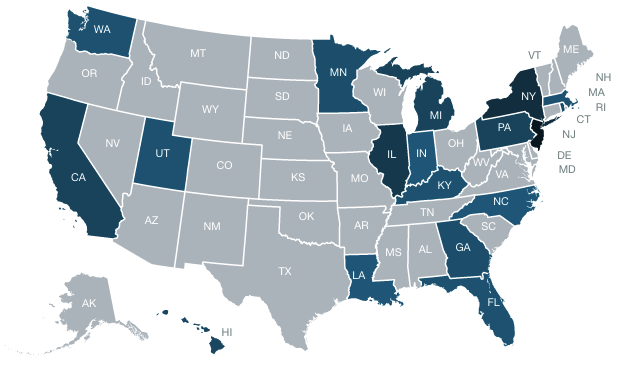
NCEL Blog
The Lead Problem: How Policy can be Used to Abate Lead in America’s Drinking Water
August 19, 2020 | This blog was written by Quinn Adams, NCEL’s Environmental Health Intern. She recently graduated with a BA in Environmental Studies with a focus on public health from the University of Colorado in Boulder.
The Issue
The Flint and Newark drinking water crises highlight the urgency of addressing lead contamination in the United States. Though these might be two of the most well-known water crises, they are not isolated events. Through the 1950’s lead pipes leading to houses (service lines) were common and, despite being outlawed in 1986, many old lead pipes remain. An estimated 10 million homes across the United States receive their drinking water through lead pipes. This number could be much higher though because as a result of a lack in testing and regulations, fewer than 25% of water utilities in the U.S. were aware of whether or not lead service lines exist for the homes they serve.
Babies, children, and pregnant women are at the highest risk for health effects associated with lead exposure. Contact with lead can cause damage to the kidneys, nervous system, and brain, which can lead to lower IQ and learning/behavioral problems. Exposure to lead is harmful to human health even at low exposures and because lead remains in the environment indefinitely, it can accumulate in the body over time. According to the Center for Disease Control and World Health Organization, there are no safe levels of exposure to lead, yet over half a million children in the US were found to have elevated blood lead levels.
It is widely understood that lead contamination is largely due to the cumulative corrosion (dissolving or wearing away) of lead in contaminated pipes as they age. So why is this issue ongoing despite being recognized as a major threat to human health?
For cities and towns with older buildings and lower average income, lead pipes are often too costly to eliminate and, as a result, communities of lower socioeconomic status often experience a disproportionate impact.
Policy Solutions
Corrosion control by treating water with chemicals to keep lead in place in pipes and fixtures is a possible mitigation strategy to help stop lead from leaching into the water supply, but the only long-term solution is replacing lead pipes altogether.
Steps to reduce lead exposure at the federal level include the Safe Drinking Water Act and the Lead and Copper Rule, which were established to reduce exposure to lead in drinking water by setting the maximum contaminant level goal at zero for lead and establishing treatment technique regulations for lead. Despite these steps, nearly 21 million people in 2015 relied on community water systems that violated these health-based quality standards. Research shows that this public health issue can be mitigated by states through better enforcement, more funding, and stricter sampling protocols.
State legislation for lead contamination prevention generally falls into two categories: lead testing and poison prevention and lead service line replacement. Because children are at an increased risk from lead exposure, many states are working on legislation that requires testing for lead in school and childcare drinking water sources and other legislation focuses on providing more funding to update infrastructure.
Below is some recent legislation to help reduce lead contamination in drinking water:
Lead Service Line Replacement
- New Jersey S 2499 would appropriate funds to the Department of Environmental Protection for environmental infrastructure projects including corrosion control treatment and lead service line replacement.
- New Jersey S 253 would require public water systems to develop lead service line inventories and replace lead service lines.
Here is a list of all pending legislation relating to lead service line replacement: https://www.quorum.us/spreadsheet/external/IsuIdCgsfGgJxxqxFsiH/
Lead Testing and Poison Prevention
- Wisconsin SB 423 would require schools to test all potable water sources for lead concentration at least once every three years. Contamination levels above those outlined in the Safe Drinking Water Act requires disconnection of the water source and remediation plan.
- California AB 2279 would expand the risk factors outlined in existing law that require a child to be screened for lead poisoning. New risk factors would include child’s residency in or visit to a foreign country or residency in a high-risk zip code.
Here is a list of all pending legislation relating to lead testing: https://www.quorum.us/spreadsheet/external/UMkQqGuqyDSsuBcayfcM/
Want to Learn More?
If you are interested in any of the topics mentioned in this blog, check out the NCEL Clean Water Briefing Book and lead fact sheet.


